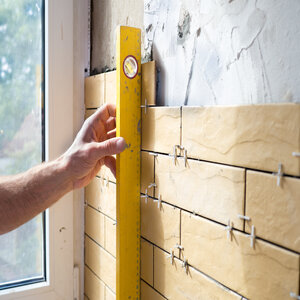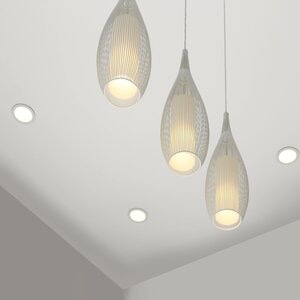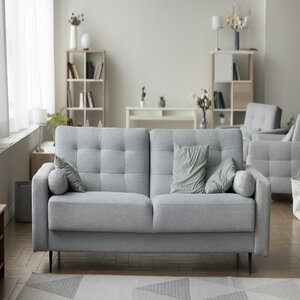Home Owner’s Guide to House Renovation in Singapore
minsstudio | 28 September 2023 | 2 min read

Are you a homeowner in Singapore looking to renovate your house but need help knowing where to start? Look no further! Our comprehensive Home Owner’s Guide to house renovation in Singapore is here to help you navigate the exciting yet overwhelming process of transforming your house into your dream home. From planning and budgeting to finding the right contractors and selecting the perfect materials, we’ve got you covered. With years of experience in the industry, we recognize the unique challenges and considerations that come with renovating a house in Singapore. I This guide, will provide useful information, practical tips, and expert advice to ensure a successful and stress-free renovation journey. Whether you’re looking to spruce up a single room or undertake a full-scale renovation, this guide will be your go-to resource for all things renovation-related. So, let’s get started and turn your house into a home you’ll love coming back to every day!
Managing the Renovation Process
Renovating a house can be an exciting and gratifying adventure, but it can also be overwhelming if not properly managed. To make certain that the renovation process runs smoothly and successfully, it’s important to have a plan in place. Start by clearly defining your goals and priorities for the renovation. Do you want to create more space, improve functionality, or enhance the aesthetics of your home? Once you have a clear vision, it’s time to start planning.
Planning your house renovation

Before you dive into the renovation process, take the time to plan out your project. Start by making a list of the specific changes you want to make in each room. Consider the layout, lighting, color scheme, and overall design style. This can help you remain organized and avoid overlooking critical details.
Next, create a timeline for your renovation. Determine the start and end dates for the project and factor in any potential delays or unexpected issues that may arise. It’s also a good idea to break down the renovation into smaller phases, especially if you’re renovating the entire house. This will help you stay focused and avoid feeling overwhelmed.
Lastly, consider hiring a professional interior designer or architect to help you with the planning process. They can provide valuable insights and recommendations based on their expertise and experience. Plus, they
could assist you in developing a cohesive design that reflects your personal style while meeting your specific objectives.
Setting a budget for your house renovation

Renovating a house can be a significant financial investment, so setting a realistic budget right from the start is important. Begin by determining how much you’re willing to spend on the renovation. Take into account factors such as the size of your house, the scope of the project, and the quality of materials and finishes you desire.
Research the current market prices for materials and labor to undertstand better the costs involved. Remember to factor in additional expenses such as permits, fees, and contingency funds for unexpected expenses. It’s always a good idea tomake a budget cushion to cater for any unexpected costs that may arise during the renovation process.
Once you have a budget in place, make sure to stick to it. Keep track of all your expenses and regularly review your budget to ensure that you’re staying on track. Consider prioritizing your spending and focus on the areas that will mostimpact your overall renovation goals.
Finding the right renovation contractor in Singapore

The success of your house renovation heavily relies on finding the right renovation contractor. With so many options available in Singapore, choosing the best one for your project can be challenging. Start by doing thorough research and gathering recommendations from friends, family, and trusted sources.
Look for contractors who have experience working on similar projects and have a good reputation in the industry. Review their portfolio to get a sense of their work style and quality. It’s also important to ensure that the contractor is licensed, insured, and has the necessary permits to carry out the renovation work.
Once you have a shortlist of potential contractors, schedule consultations with each of them. Use this opportunity to discuss your renovation goals, ask questions and evaluate their communication and problem-solving abilities. Remember to request references from prior clients and follow up with them to receive feedback on their experience dealing with the contractor.
Ultimately, choose a contractor who not only fits within your budget but also understands your vision and can deliver the results you desire. Remember, trust and communication are key when working with a renovation contractor, so make sure you feel comfortable and confident in your decision.
Selecting materials and finishes for your renovation

One of the most exciting parts of a house renovation is selecting the materials and finishes that will bring your vision to life. From flooring and wall finishes to lighting fixtures and kitchen appliances, every detail plays a crucial role in creating the desired look and feel of your home.
Flooring

When it comes to flooring options, there are numerous choices available in the market. Consider factors such as durability, maintenance requirements, and aesthetics when selecting the flooring material for each room. Popular options include hardwood, laminate, vinyl, and tiles. Each material has its own unique features and benefits, so take the time to research and compare before making a decision.
Opt for durable and easy-to-clean flooring materials for high-traffic areas such as the living room and kitchen. In bedrooms and other private spaces, you can prioritize comfort and aesthetics. Don’t forget to consider factors such as cost, installation requirements, and resale value when selecting the flooring material.
Wall finishes

The choice of wall finishes can significantly impact your home’s overall look and ambiance. Paint is a popular and cost-effective option that allows for endless color possibilities. Wallpaper is another versatile option that can add texture and pattern to your walls. If you’re looking for a more luxurious and sophisticated look, consider using wall panels, textured plaster, or stone cladding.
When selecting wall finishes, consider factors such as durability, ease of maintenance, and compatibility with the overall design style of your home. It’s also important to choose finishes that are suitable for the specific room and its function. For example, opt for water-resistant finishes that can withstand moisture and humidityin wet areas such as bathrooms and kitchens.
Lighting fixtures

Lighting plays a crucial role in creating the right ambiance and highlighting the key features of your home. When selecting lighting fixtures, consider the function of each room and the specific lighting needs. Start by identifying the main source of light, such as ceiling-mounted fixtures or recessed lighting. Then, add task lighting for specific activities such as reading or cooking, and accent lighting to highlight artwork or architectural features.
Consider the different types of lighting fixtures available, such as pendant lights, chandeliers, wall sconces, and floor lamps. Pay attention to the style, size, and material of the fixtures to ensure they complement the overall design of your home. Choosing energy-efficient lighting options is also essential to reduce electricity consumption and lower utility bills.
Don’t forget to consider natural lighting as well. Maximize the use of windows and skylights to bring in natural light, which not only enhances the aesthetics of your home but also has numerous health benefits.
Design and Layout
The design and layout of your home play a crucial role in creating a comfortable and functional living space. Whether you prefer a modern, minimalist, or traditional style, it’s important to carefully plan the design and layout to ensure that it meets your specific needs and reflects your personal style.
Space planning

Start by evaluating the existing layout of your home and identifying areas that can be improved. Consider factors such as traffic flow, functionality, and the specific needs of your family members. For example, if you have young children, create a dedicated play area or incorporate child-proofing measures into the design.
Think about how you use each room and how you want them to function. Consider storage requirements, furniture placement, and the overall flow between different areas. This will help you optimize the use of space and create a layout that maximizes both functionality and aesthetics.
Color scheme

The color scheme you choose for your home can greatly impact the overall atmosphere and mood. When selecting colors, consider factors such as the size of the room, the amount of natural light, and the desired ambiance. Lighter colors can make a space feel more open and airy, while darker colors can add drama and coziness.
It’s also important to consider the psychology of colors and how they can affect your mood and emotions. For example, blue is known for its calming and relaxing properties, while yellow can create a sense of warmth and energy. Experiment with different color combinations and consider using accent colors to add visual interest and depth to your home.
Furniture and accessories

The furniture and accessories you choose can greatly enhance the overall design and functionality of your home. When selecting furniture, consider factors such as comfort, durability, and style. Opt for pieces that are suitable for the specific room and its function. For example, choose a comfortable sofa for the living room and a sturdy dining table for the dining area.
Don’t forget to pay attention to the scale and proportion of the furniture to ensure that it fits well within the space. Consider using multi-functional furniture such as storage ottomans or sofa beds to maximize space in smaller rooms. Accessories such as artwork, rugs, curtains, and plants can add personality and character to your home. Choose pieces that complement the overall design style and create a cohesive look.
Post Renovation Tips
Congratulations on completing your house renovation! Now that the hard work is done, it’s time to focus on the final touches and ensure a smooth transition into your newly renovated home. Here are some post-renovation tips to help you make the most of your newly transformed space.
Clean and declutter

After the renovation, your home may be filled with dust, debris, and leftover materials. Take the time to thoroughly clean each room, including the floors, walls, windows, and fixtures. Consider hiring professional cleaners to ensure a deep and thorough clean.
Use this opportunity to declutter and organize your belongings. Get rid of any items that are no longer needed or don’t fit within the new design. Consider donating or selling items in good condition but no longer serve a purpose in your home. This will not only create a more organized and clutter-free space but also give you a fresh start in your newly renovated home.
Inspect and troubleshoot
Take the time to inspect your home for any potential issues or defects that may have been overlooked during the renovation process. Check for any cracks, leaks, or faulty electrical wiring. Make a checklist of any repairs or touch-ups that need to be done and communicate them to your renovation contractor.
It’s also a good idea to test all the fixtures, appliances, and systems in your home to ensure they’re functioning properly. This includes checking the plumbing, electrical outlets, lighting fixtures, and heating/cooling systems. If you notice any issues, contact your contractor immediately to address them before they become bigger problems.
Personalize and enjoy
Now that your home is renovated and ready to be lived in, it’s time to personalize it and make it your own. Add personal touches such as artwork, photographs, and decorative items that reflect your personality and interests. Consider rearranging furniture or adding new accessories to create a fresh and inviting space.
Take the time to enjoy your newly renovated home and appreciate the hard work and effort that went into creating it. Host a housewarming party to share your new space with family and friends. Celebrate the transformation and create new memories in your beautiful and functional home.
Conclusion
Renovating a house in Singapore can be an exciting and rewarding experience, but it’s important to approach it with careful planning and consideration. By following the tips and advice in this Home Owner’s Guide to House Renovation in Singapore, you’ll be well-equipped to navigate the renovation process and create a home you’ll love for years to come. Stay organized, set a realistic budget, and work with trusted professionals to ensure a successful and stress-free renovation journey. Happy renovating!
Also from Mins Studio: Why Hire a Minor Renovation Contractor in Singapore




